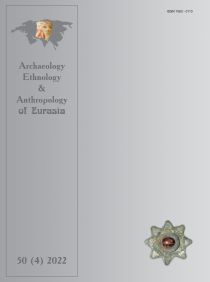
|
Archaeology, Ethnology & Anthropology
of Eurasia
50 (4) 2022
doi:10.17746/1563-0110.2022.50.4.120-128
|
Annotation:
Literacy and Numeracy Skills of the Inhabitants of Tara
and its Rural Districts in the 17th and 18th Centuries
L.V. Tataurova1, S.F. Tataurov1, and F.S. Tataurov2
1Institute of Archaeology and Ethnography, Siberian Branch, Russian Academy of Sciences, Pr. Akademika Lavrentieva 17, Novosibirsk, 630090, Russia
2Budgetary Institution of Culture Museum-Reserve “Antiquity Siberian”, Sovetov 29, Bolsherechye, Omsk Region, 646670, Russia
On the basis of archaeological, written, and historical sources, we assess the extent to which 17th-18th century Russian inhabitants of the town of Tara and of its rural periphery (Tarsky District, Omsk Region) were able to read, write, and count. We analyze archaeological sources suggesting that those living in western Siberian towns, such as Mangazeya, Tobolsk, etc., were literate and able to count. This is evidenced by artifacts from the town of Tara and the adjacent village of Ananyino, indicating literacy: inkpots, penknives, quills, a wooden trade label with inscription, and clay balls, possibly for counting boards—predecessors of Russian abacuses. A bone case, found at the house of a 17th century junior commander in Tara, might have been destined for letters. Such artifacts are described in detail. According to written documents, just 3.4 % of those belonging to the service class of Tara and of its rural periphery were literate. They were members of various social strata: governors, Boyar scions, clerks of government office, Cossack and army commanders of various rank, reiters, mounted Cossacks, and cannoneers. Educated ones were priests and icon-painters. Stationery available at the Tara market included paper, ink, and raw materials for their manufacture. Books and candles were sold too. Relative advantages and disadvantages of documents versus artifacts as sources of knowledge about literacy are discussed. A combined approach helps to reveal key archaeological indicators of literacy and numeracy skills and to assess the approximate share of literate individuals in various social strata.
Keywords: Literacy, archaeology, written sources, Russians, reconstructions